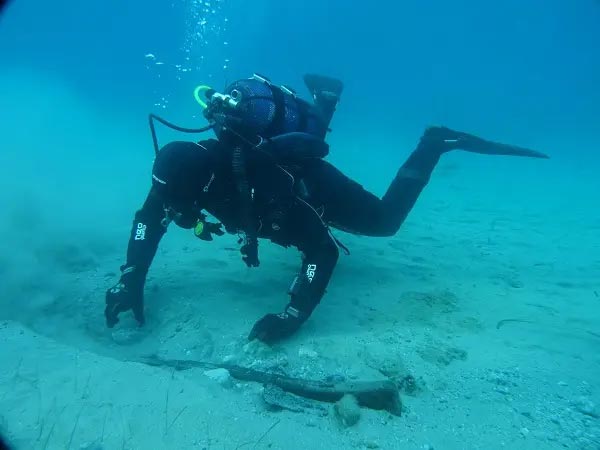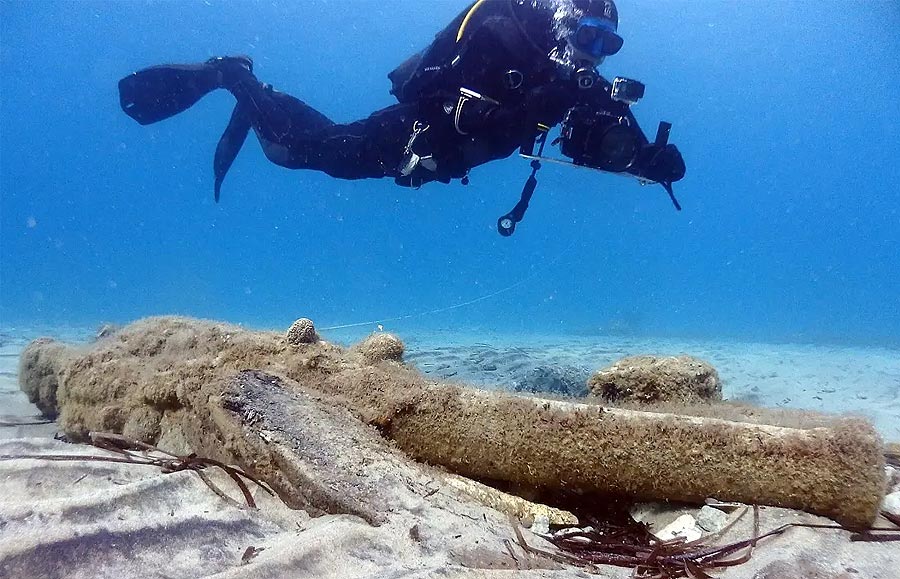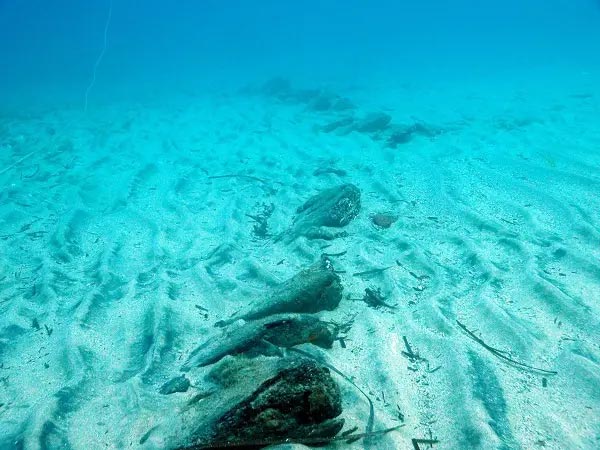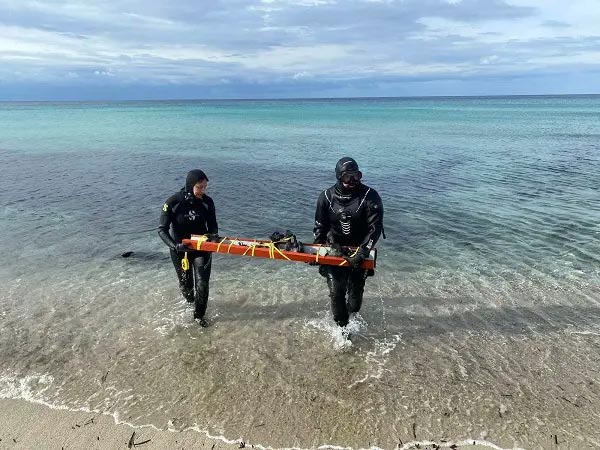Halkidiki: The Shipwreck of the Schooner with Supplies for the Fighters of 1821 in Scala Furka

The ship was traveling amidst a severe sea storm off the coast of Furka, transporting weapons and supplies to the insurgents in Halkidiki who were fighting under the guidance of Emmanuel Pappas.
The two-masted sailboat, possibly a schooner, brig, or gulet, ran aground in Scala Furka just 80-100 meters from the shore and rests on the sandy seabed at a depth of 4 meters.
The sunken wooden boat was discovered incidentally during an underwater inspection by archaeologists from the Ephorate of Underwater Antiquities in June 2020. A rescue investigation was conducted in November on its remaining parts.

Presenting this significant shipwreck of recent times today during the 35th Scientific Meeting on Archaeological Work in Macedonia and Thrace, the excavation leader, archaeologist of the Ephorate of Underwater Antiquities, Stavroula Vrachionidou, stated that it is not ruled out that it was a ship transporting food to the rebels in Halkidiki.
The ship is dated to the late 18th to early 19th century, and among its findings, two cannons and a wooden carbine stand out. Ropes and sections of sails are discernible on the seabed. One of the two cannons, in good condition, is 1.65 meters long with a barrel width of 13-16 centimeters, while the second, of different type, is 1.86 meters long and 16 centimeters wide and is in poor condition.

As for the wooden carbine, its type was widely known during the 1821 Revolution, having a pyramid shape and a length of 1.5 meters, resembling European rifles typologically.
As stated during the 35th Scientific Meeting by Mrs. Vrachionidou, 35 movable findings have been recovered from the shipwreck, including various ceramics and organic material. Specifically, large vessel fragments, intact clay vessels, porcelain cups, an intact wooden ladle, a bronze inkwell with embossed decoration, a glass vessel, and a glass bottle have been found.
Among the organic material, pieces of a straw basket and seeds, presumed to be from coffee and originating from a dissolved sack, stand out.
According to Mrs. Vrachionidou, there are visible signs of illegal excavation at the wreck, such as a modern sunken ladder, and it is not excluded that some of the findings have been lifted and removed by looters.
The ship is not intact, with many of its parts missing. It is estimated to have been 25 meters long, and numerous ropes and sail fragments can be seen on the sandy seabed.

An Intriguing Working Hypothesis
The name of the ship is not apparent, nor is its exact type, and there is no information about the sea route it followed. Archaeologists present an interesting working hypothesis, studying the material it carried, the location of its shipwreck, and the historical context—given that it is a boat from the early 19th century.
They do not rule out the possibility of it being connected to the 1821 Revolution and the uprising of the inhabitants of Halkidiki, who, under the leadership of Emmanuel Pappas, a native of Serres, a wealthy merchant, and banker with businesses in Vienna, Constantinople, and Thessaloniki, dedicated a significant portion of his fortune to the struggle of the enslaved Greeks. He received a directive from Alexandros Ypsilantis to lead the uprising in Halkidiki.
He started by organizing the monks on Mount Athos and then led the resistance in the isthmus of Potidaea, gathering 2000 men in the summer of 1821 in Kassandra. An indication of Emmanuel Pappas’s influence was that 11 ships arrived in Kassandra from Samos with supplies and food for the rebels in July 1821.
Aid for Halkidiki came from all over Greece. One of these ships may well be the schooner lying on the sandy seabed of Scala Furka, awaiting further excavation and study to tell its story.
*The photos were provided by the Ephorate of Underwater Antiquities.

